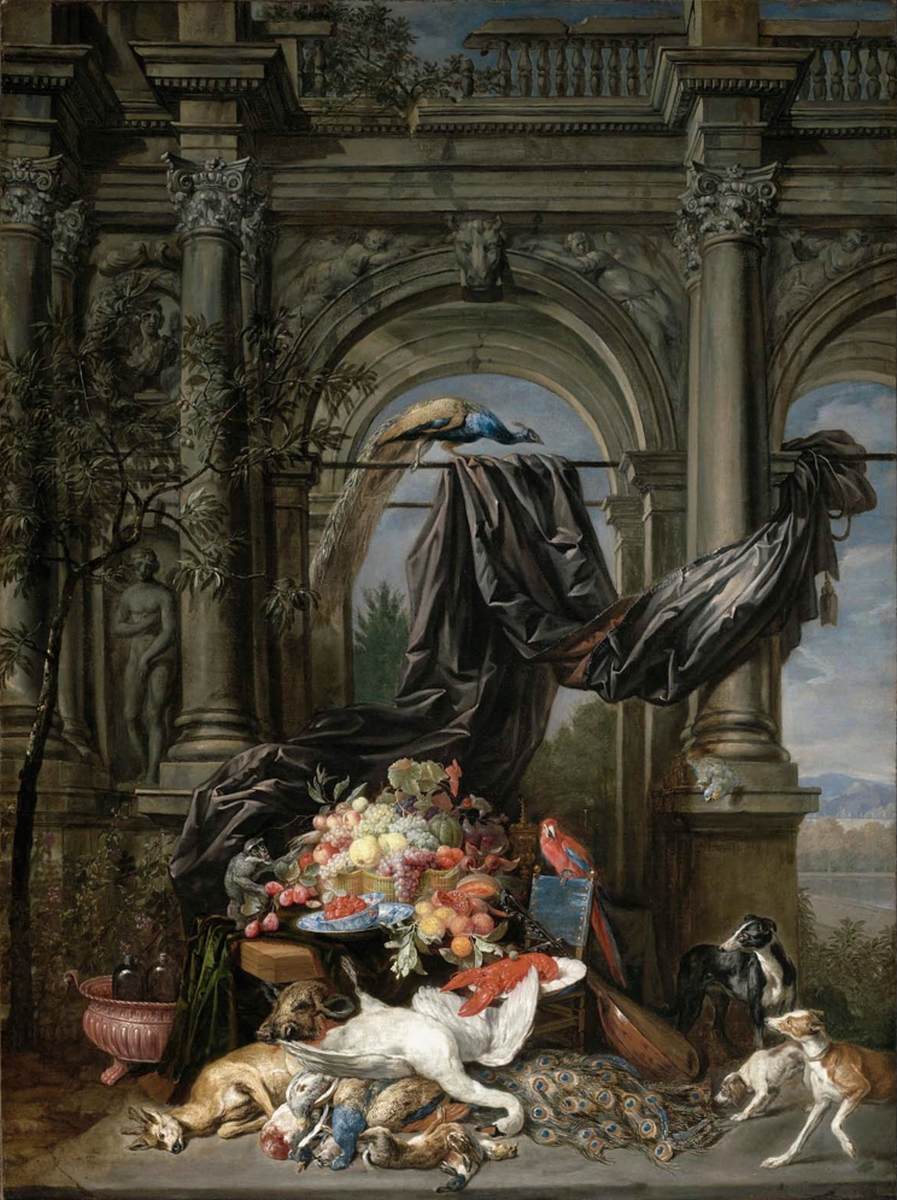Description
The painting Still-Life in an Architectural Setting by the artist Erasmus II Quellinus is an impressive example of the 17th-century Flemish Baroque style. This masterpiece features a complex and detailed composition that combines architectural and natural elements in a single image.
The painting is divided into two main areas: the upper part represents an architectural view of a building with columns and arches, while the lower part shows an elaborate still life with fruit, flowers, glass and metal objects, and a small animal.
The use of color is impressive in this painting. The artist has used a rich and vibrant palette to bring the objects in the still life to life, while softer, earthier tones are used for the background architecture. The light and shadow effects are also noticeable, especially in the way light filters through the columns and arches.
The history of the painting is interesting, as it was created during a time when still lifes were very popular in the Netherlands. However, the inclusion of architectural elements in Quellinus's composition is somewhat uncommon in this genre. This makes the work unique and distinctive.
Lesser known aspects of the painting include details such as the small animal at the bottom of the image, believed to be a guinea pig, an exotic animal at the time. Furthermore, Quellinus is known to have worked closely with other artists of the time, such as Peter Paul Rubens, and this painting is believed to have been influenced by his style.
In short, Still-Life in an Architectural Setting is a stunning work of art that combines architectural and natural elements in a unique and exciting way. Its use of colour, composition and detail make it a Flemish Baroque masterpiece that remains relevant and exciting to this day.

